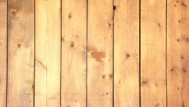Wire type fall prevention system Interior Anchor
* Rail mounting screws are not included because the substrate is different. Please select screws that match the wall material.
Recommended: ø3.5 to ø4.0, length 30 mm or more
*Since the substrate position is different, we do not drill holes in the rails. Please check the substrate position before drilling.
Recommendation: Drill holes of 4.5mm to 5.0mm with an electric drill, etc.
|
Important:About fixing screw to the wall
|
Screws for fixing to the wall are not included because the type of screw used depends on the material and structure of the mounting surface.
In order to select the appropriate screws for the material of the wall, we will introduce how to select screws for each material.
|
Check wall material and structure
|
|
1. Check it out by looking at it
|
|
2. Try picking the wall with a thin needle
|
Stick a thin needle into an inconspicuous place on the wall. * Use a substrate sensor (needle type).
If there is a substrate, the needle sticks and stops in the middle (about 15 to 25 mm).
In this case, it is often the case that the concrete or wooden wall is covered with cloth.
Also, if you look at the tip and see white powder on it, the wall is a plasterboard wall; if no powder is on it, the wallpaper is probably on a wood wall.
If there is no substrate, the needle will go all the way in. It is very easy to tell.
|
Reference:How to choose the right screw for the material of the wall
|
Generally, screws used for fixing to the wall should be 4 to 5 cm long.
However, please note that the load capacity will vary depending on the material of the mounting surface and the condition of the substrate.
For example, plasterboard walls attached with picture hangers or interior anchors have a lower load-bearing capacity than wood or concrete walls.
Select screws that are thinner than the diameter of the holes in the attached wall anchors and screw heads that are larger than the diameter of the holes in the anchors.
| Plasterboard |
Wooden wall (with gypsum board substrate) |
Concrete wall (with gypsum board substrate) |
Metal (for plasterboard base: light steel frame) |
|

|

|

|

|
|
| screw type | Varies depending on the substrate | wood screw | Anchor plug for concrete | Tapping screw |
| Note |
Gypsum is the main ingredient of this material, which is commonly used in Japanese houses and condominiums. The wall is hollow except for the back side where the substrate is inserted. The gypsum board on the surface is easily crumbled and screws do not work, so it is necessary to put screws at the location where the substrate is placed. The base material can be wood, metal, or concrete. When placing screws, use screws or plugs that are appropriate for the substrate material. |
Wood screws can be used to drive directly into thick wood walls or when the base of the plasterboard is wood. In most cases, there is no need to drill holes or use plugs. However, if the thickness is less than 11 mm, fix the wall to the base material at the back of the wall in the same way as when fixing to plasterboard. |
Concrete is a material that tends to deform easily, making it difficult for screws to work. Therefore, a plastic or nylon concrete anchor plug is required.
The plug expands to fill the gap and hold the anchor firmly in place. |
If the plasterboard base is metal, such as LGS (lightweight steel frame), use tapping screws that are threaded all the way to the neck. Use a drill to make a pre-drilled hole with a smaller diameter than that of the screw, and use an electric screwdriver to tighten the screw. |




